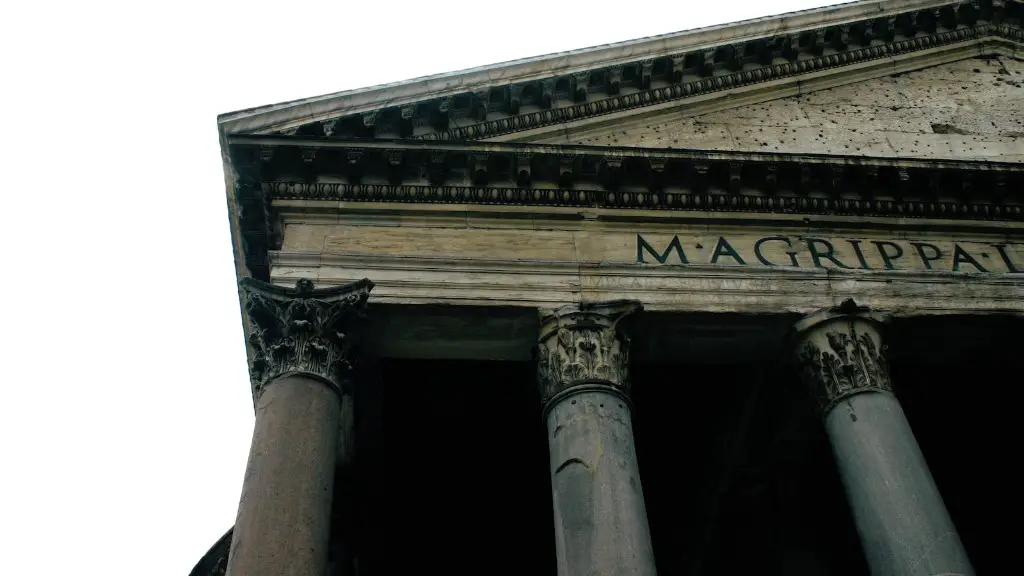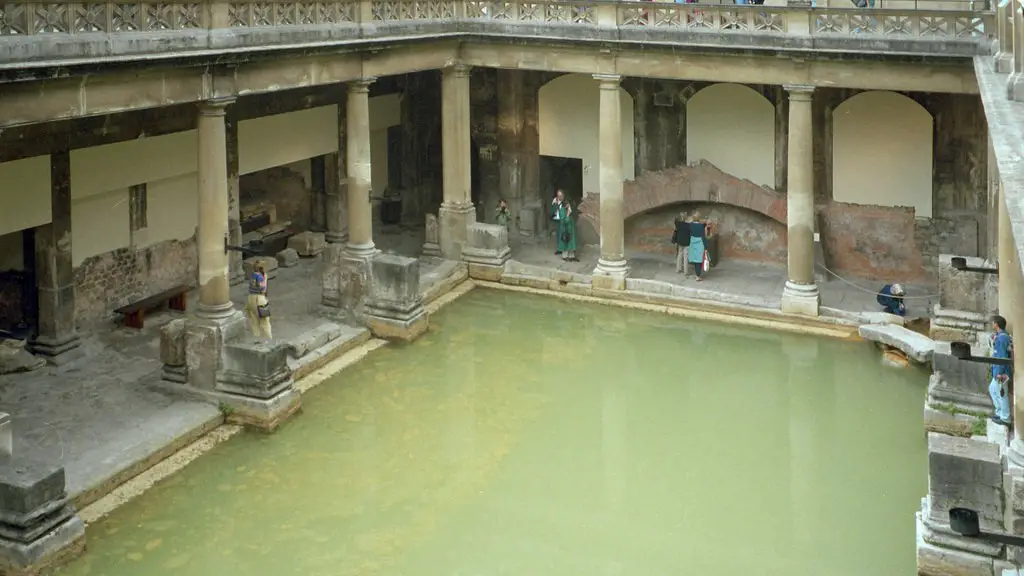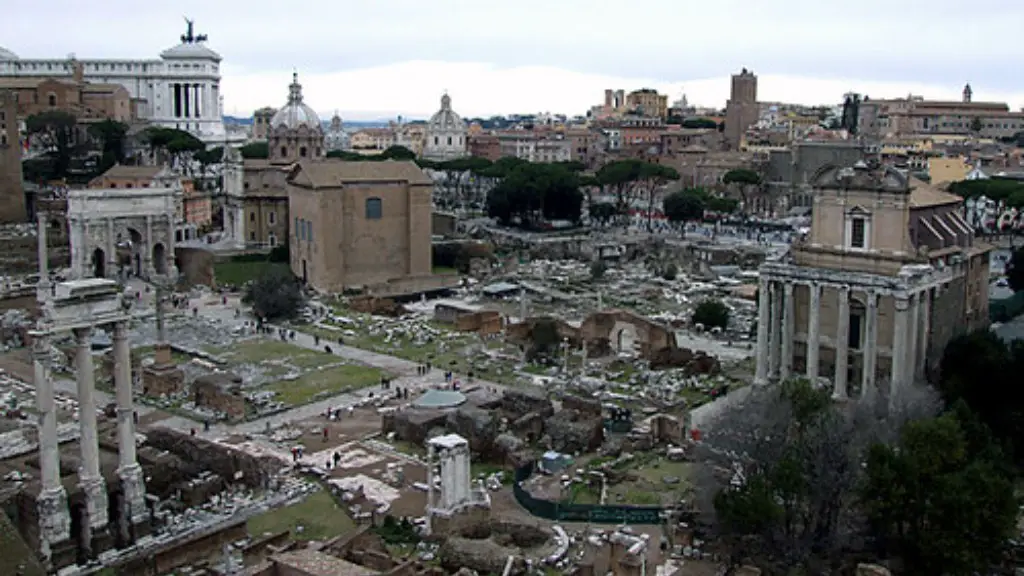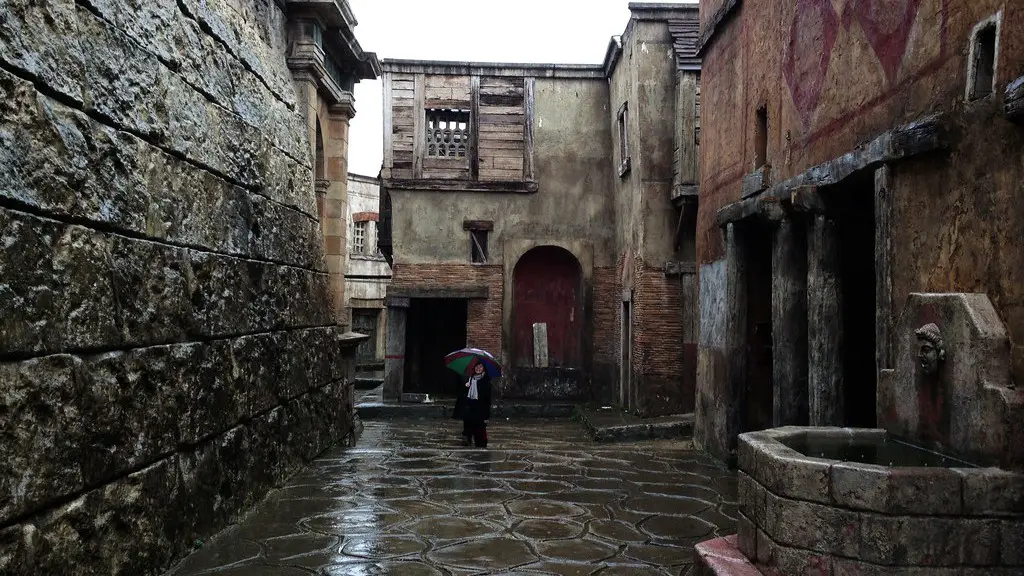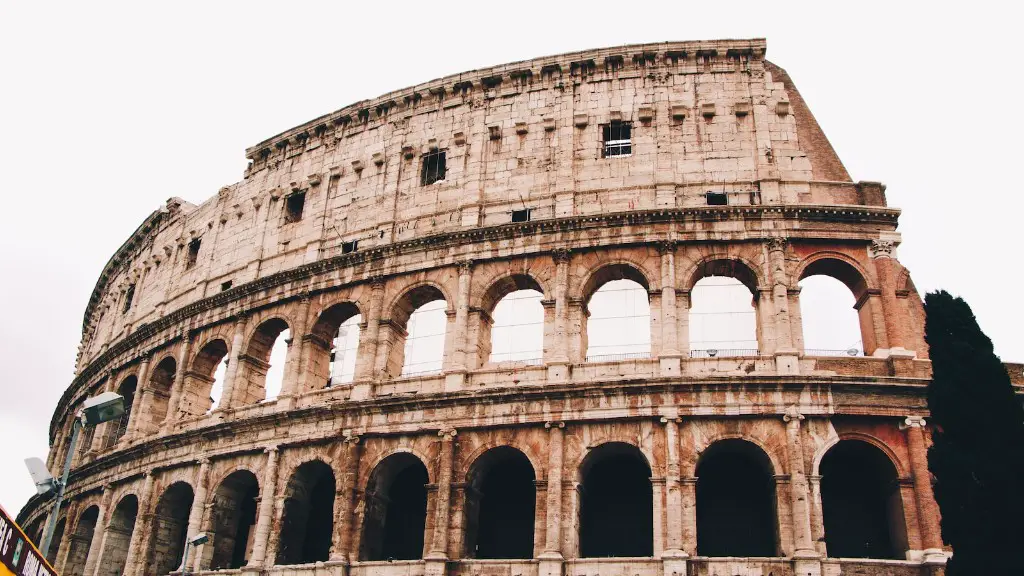Religion in Ancient Rome
Religion in Ancient Rome was an integral part of the culture, with the gods and goddesses deeply embedded in the everyday life. Religious ceremonies and festivals were essential aspects of the city’s life; from the simple household rituals to the public celebrations held during special times of the year. Ancient Roman religion was heavily influenced by the Greeks, and their gods and goddesses were adapted and given different names. The pantheon of Roman gods, known as the Dii Consentes were central to everyday life, with the emperor himself being a bridge between the human and the divine. As such, religion was an intrinsic part of Roman identity, with its own customs and traditions.
In ancient Rome, gods and goddesses were believed to be responsible for various aspects of life. From the gods of agriculture and fertility to the gods of fire and lightning, Romans depended heavily on their pantheon to ensure their prosperity and well-being. Roman religion was polytheistic, and gods were worshipped in a variety of temples throughout the city. As the empire expanded, new gods and goddesses were added to the roster. Roman Empire introduced gods from its colonies and foreign deities from the conquered areas, increasing their pantheon even more.
Rome was a highly hierarchical society, and religion played an important role in upholding the status quo. It established a clear distinction between patricians and plebeians, with patricians having the exclusive right to religious ceremonies and rituals. Similarly, the most powerful priest in Rome, the Pontifex Maximus, was a symbol of authority and political power. The Altar of Victory and the Temple of Janus also held a special place in Roman religious life.
Religion in Ancient Rome had a strong focus on practicality and tradition. As Rome expanded, the senate imposed religious obligations in order to maintain law and order in its provinces. Cultures were often assimilated, but their gods were given greater honors. Rituals and ceremonies played a major role within Roman religion, and festivals were held to honor their gods, as well as to mark important days in the calendar.
Religion in Ancient Rome wasn’t just about maintaining law and order; it also served to unite people from different regions with different beliefs.The Romans highly valued the diversity of their gods, and often syncretized deities to meet the needs of different belief systems. This syncretism played an especially important role in the empire’s expansion, as it served to bridge cultures and ease the transition into Roman rule. As a result, religion in Ancient Rome had a significant impact on the empire’s growth and its ability to remain a united force.
While religion provided a unifying force, it was also a source of internal strife. Religious intolerance among the various belief systems was commonplace, and very few sects were recognized as official religions. It was also a source of dissent in the Roman Republic, as certain elements of Roman religious practice clashed with foreign cults. As a result, religion often had a turbulent history in Ancient Rome, and its influence could be seen in every aspect of Roman life.
Roman Gods
Ancient Rome had a vast pantheon of gods and goddesses, from the state-sanctioned gods at the center of Roman religious practice, to the foreign gods imported from conquered areas and assimilated cults. Some of the most prominent gods and goddesses in Roman religion included Jupiter, Juno, Minerva, Neptune, Venus, Mars, Vesta, and Janus.
Jupiter was the primary god of Roman religion and the ruler of the other gods. He was the patron god of the Roman state, and all public oaths were made in his name. Jupiter was associated with thunder and lightning, and was the most important deity of Roman religion. He had a temple on the Capitoline Hill, and a large statue of the god which was carved out of a single, pink marble block.
Juno, the wife of Jupiter, was the patron goddess of Rome and was closely linked with marriage and fertility. She was often depicted as a beautiful woman with a crown of laurel leaves, and she had a temple in the Roman Forum. Minerva, the goddess of wisdom, crafts, and war, was associated with the owl and was the protector of the city of Rome. Her holy day was celebrated every year on March 19th, and her temple was located on the Aventine Hill.
Neptune, the god of the sea and of fresh water, kept watch over rivers and oceans. His temple was near the Circus Maximus and was covered in lavishly decorated mosaic floors. Venus, the goddess of love and beauty, was associated with the rose and was the patron of sex and marriage. Her temple was located on the Capitoline Hill and she was the most widely venerated deity in Rome.
Mars, the god of war, was seen as a protector of Rome, and his holy day was celebrated in mid-March. He was depicted as a young man with a spear, and his temple was located on the Palatine Hill. Vesta was the goddess of the hearth and the home, and she was associated with domestic stability and prosperity. Her temple was located in the Roman Forum and was guarded by six Vestal Virgins.
Finally, Janus was the god who symbolized the transition between seasons and transitions between states. He was associated with gates and doorways and his temple was located at the entrance of the Forum, signifying his role as the guardian of the city.
Roman Cultures
The spread of Roman culture brought with it the spread of Roman religion. As the empire expanded, its inhabitants adopted aspects of Roman religion and added their own deities and customs to its pantheon. Many of the assimilated gods were eventually incorporated into the religious practices of the Empire, and the Roman pantheon grew even larger as a result.
The adaptation of foreign cults into the Roman religious fold is a useful example of how Roman culture was able to integrate elements of the cultures it encountered. It also served to legitimize Roman rule and gave the empire a sense of unity. As a result, the pantheon of Roman gods we know today was greatly shaped by its interactions with foreign cultures and believes.
Foreign cults such as Mithraism, Dionysianism, Isiacism, and Christianity were all absorbed into the religious landscape of the Roman Empire. The imperial cult was also a major feature of religious life, with the emperor himself being worshipped as a god. This imperial cult had a major impact on the status of the emperor, and it was an important source of power and legitimacy for the ruling class.
With its peers from around the world, the Roman pantheon was constantly changing and adapting to the needs of the Empire. Many deities were adopted from conquered regions, and new ones were blended into existing cults. Other religious practices, such as mystery cults, were also adopted by Roman religion, further adding to its complexity. Religion in Ancient Rome was a versatile and dynamic force, and its legacy can still be seen in modern culture today.
Influence of Religion on Roman Society
Religion in Ancient Rome had a profound influence on the culture and its daily life. From public festivals to private rituals, religion was an essential part of the Roman experience. Gods were worshipped in temples located throughout the empire, and religious sacrifices were an important part of Roman life. Importantly, religious festivals were seen as a way to honor the gods, but also as a way to strengthen the sense of Roman identity.
The influence of religion extended beyond the tangible public elements, and into the private life of Roman citizens as well. The idea of the family was central to Roman life, and household gods such as the Lares, the Penates, and the Genius were all closely associated with the family and its prosperity. The religion was also closely associated with morality, and Roman citizens were expected to uphold their gods’ laws and respect their divine authority.
The influence of religion extended beyond the individual, and even into the political sphere. The importance of Roman religion as a source of political legitimacy was a major factor in the rise of the Republic and later the Empire, as the gods’ authority provided a tangible and divine source of power to the ruling classes. As a result, religion in Ancient Rome played a major role in unifying the nation and providing a source of legitimacy and unity.
Religion in Ancient Rome was a bedrock of the society’s cultural and political life, and it still has an impact today. Rome’s gods and goddesses, ceremonies and festivals, and the various belief systems it assimilated provided a vast network of practices and beliefs, which still shape and influence modern culture. Religion in Ancient Rome was an incredibly important and influential force, and its legacy continues to be felt today.
Roman Religious Practices
Ancient Roman religion had a variety of closely linked practices and ceremonies associated with it, from animal sacrifices and divination, to processions and festivals. Animal sacrifices were the most important ritual in Roman religion and could be offered to almost any deity. The most common animals sacrificed were oxen, goats, sheep, and pigs, and their remains were typically burnt and thrown intoriver as an offering to the gods.
Divination was another important practice in Roman religion, and a wide variety of methods were employed to seek divine guidance and divine will. The most common techniques included the reading of entrails and the interpretation of dreams. Processions were also an important part of religious life, and the Roman Forum was regularly used to stage them. The festival of games, the Ludi, were held to honor different gods and goddesses, and there were also holy days, such as the Saturnalia, where all work and business was suspended in honor of the gods.
The Roman pantheon was vast and complex, and the variety of religious practices was a reflection of this diversity. From rites of purification to the veneration of household gods, religion in Ancient Rome was an essential component of its culture and provided a unifying factor among its peoples. As a result, religious practices had a significant impact on Roman life, and the legacy of these beliefs can still be seen today.
Roman Religious Festivals
Religious festivals were central to Roman religious life and were held on regular days throughout the year. These festivals served a variety of purposes, from celebrating the fertility of the land, to honoring the gods, to strengthening the sense of Roman identity. All festivals were heavily linked to religious belief and practice, and they often involved rituals and ceremonies devoted to various gods.
The most famous festival was the Saturnalia, which was held in honor of Saturn, the god of agriculture and fertility. This celebration lasted seven days and marked the end of the Roman year. Other important festivals included the Ludi, which were held to honor various gods, the Parentalia, which was dedicated to family ancestor worship, and the Compitalia, which was held to honor the Lares, Roman household gods.
In addition to these major festivals, smaller ones were held throughout the year in honor of various gods and goddesses.These festivals often had specific religious tasks associated with them, such as prayers and sacrifices to the gods. They typically involved processions and parades filled with singing, dancing, and games. These smaller festivities were important in maintaining the status quo and ensured that honor and respect were shown to the pantheon of gods.
Religious festivals were an important part of life inAncient Rome, and the diversity of these celebrations helped to unite the empire and its people. By honoring their gods, the Romans were able to reaffirm their faith in the gods and in their own cultural identity. Furthermore, public festivals brought the diverse elements of Roman society together, bridging gaps between its inhabitants and reinforcing a shared sense of identity.
